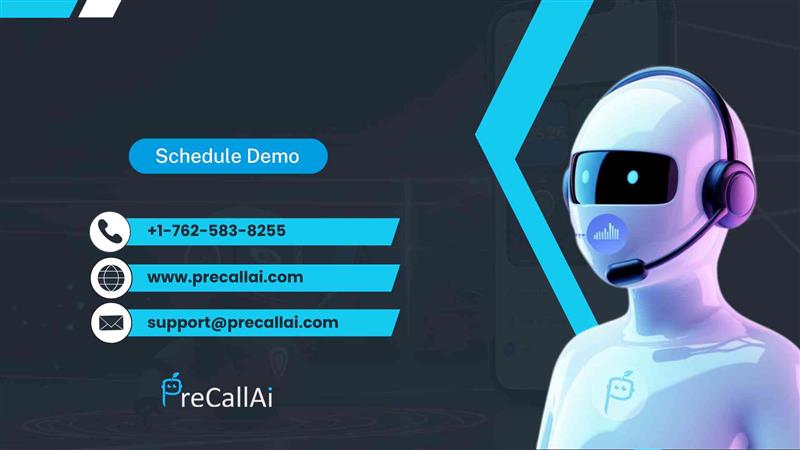Modern businesses face a common challenge. Customer calls keep increasing. Hiring new staff costs money. Training takes time. Equipment needs investment. Smart companies find better solutions.
Table of Contents
You can scale phone operations without hiring additional staff. Technology offers powerful alternatives. Automation handles routine tasks. AI manages simple inquiries. Smart systems route calls efficiently.
This guide reveals proven strategies. Your business can grow its call capacity. Customer satisfaction stays high. Operational costs remain controlled.
Why Scale Phone Operations Without Hiring Makes Sense
Traditional scaling methods drain resources. Each new hire requires salary payments. Benefits add extra costs. The office space needs expansion. Equipment purchases multiply expenses.
Alternative approaches deliver better results. Technology solutions work 24/7. Automation never calls in sick. AI systems handle multiple calls. Smart tools reduce human error.
Cost savings become immediately visible. Monthly software subscriptions cost less. One-time technology investments replace ongoing hiring expenses. Efficiency gains compound over time.
Customer service quality improves dramatically. Consistent responses eliminate human variability. Faster resolution times increase satisfaction. Round-the-clock availability meets modern expectations.
Smart Technology Solutions for Phone Operations
Call Routing Systems
Intelligent call routing transforms customer experiences. Incoming calls reach appropriate departments automatically. Skill-based routing connects customers with qualified agents. Time-based routing distributes calls evenly.
Interactive Voice Response (IVR) systems handle basic inquiries. Customers get instant answers to common questions. Complex issues route to human agents. Wait times decrease.
Cloud-based phone systems offer scalability. Adding new lines costs minimal fees. Geographic expansion becomes simple. Remote teams integrate seamlessly.
AI-Powered Phone Assistants
Artificial intelligence revolutionizes phone operations. AI assistants handle routine customer inquiries. Natural language processing understands customer needs. Machine learning improves responses over time.
Voice recognition technology identifies caller intent. Automated systems provide accurate information. Complex requests transfer to human agents. Simple tasks complete without human intervention.
AI chatbots work alongside phone systems. Customers choose preferred communication channels. Workload distribution optimizes agent availability. Response times improve across all channels.
Call Analytics and Monitoring
Data-driven insights optimize phone operations. Call analytics reveal peak calling times. Agent performance metrics identify improvement opportunities. Customer feedback highlights service gaps.
Real-time monitoring enables quick adjustments. Managers spot issues. Automated alerts notify supervisors of problems. Performance dashboards track key metrics.
Historical data guides strategic decisions. Seasonal patterns inform staffing plans. Customer trends shape service improvements. Predictive analytics forecast future needs.
Automation Strategies That Work
Automated Call Handling
Automated systems manage routine phone tasks. Appointment scheduling happens without human intervention. Order status updates provide instant information. Payment processing completes through phone menus.
Voice-enabled self-service options empower customers. Account balance inquiries get immediate answers. Address changes process automatically. Service requests route to appropriate teams.
Callback systems eliminate hold times. Customers request callbacks. Automated systems dial customers. Satisfaction scores improve dramatically.
Integration with Business Systems
Phone systems integrate with existing software. Customer relationship management (CRM) systems sync call data. Enterprise resource planning (ERP) tools share inventory information. Help desk software tracks support tickets.
Screen pop functionality displays customer information. Agents see caller history. Previous interactions provide context. Personalized service becomes standard practice.
Unified communications platforms combine channels. Phone calls integrate with email systems. Text messages sync with voice communications. Social media interactions merge with phone data.
Outsourcing Options for Phone Operations
Virtual Call Centers
Virtual call centers provide scalable solutions. Professional agents handle overflow calls. Peak periods get additional support. Seasonal demands meet flexible capacity.
Specialized providers offer industry expertise. Healthcare call centers understand medical terminology. Financial services providers know compliance requirements. Technical support teams possess specialized knowledge.
Cost structures remain predictable. Pay-per-call models align with usage. Monthly subscriptions provide budget certainty. Setup costs stay minimal.
Answering Services
Professional answering services extend business hours. After-hours calls get proper handling. Weekend coverage maintains customer service. Holiday support ensures continuous availability.
Message taking services capture important information. Urgent calls route to on-call personnel. Routine inquiries get documented properly. Follow-up actions get scheduled appropriately.
Bilingual services expand customer reach. Multiple language support serves diverse markets. Cultural competency improves customer satisfaction. International business opportunities increase.
Training and Development Without New Hires
Skill Enhancement Programs
Existing staff can handle increased call volumes. Cross-training creates versatile team members. Multi-skilled agents manage diverse inquiries. Flexibility improves coverage.
Online training platforms deliver consistent education. Self-paced learning accommodates work schedules. Certification programs validate skill development. Performance tracking measures progress.
Mentorship programs accelerate skill development. Experienced agents guide newcomers. Best practices get shared throughout teams. Knowledge transfer preserves institutional wisdom.
Performance Optimization
Regular coaching sessions improve agent performance. Call monitoring identifies improvement opportunities. Feedback sessions address skill gaps. Recognition programs motivate continuous improvement.
Quality assurance programs maintain service standards. Mystery shopping evaluates real experiences. Customer surveys provide direct feedback. Performance metrics guide improvement initiatives.
Gamification elements increase engagement. Leaderboards create friendly competition. Achievement badges recognize accomplishments. Reward systems celebrate success.
Technology Tools for Efficiency
Call Management Software
Comprehensive call management platforms streamline operations. Call queuing systems organize incoming requests. Agent scheduling tools optimize coverage. Reporting features track performance metrics.
Contact center software integrates multiple channels. Phone calls combine with email management. Chat systems work alongside voice communications. Social media interactions merge with traditional channels.
Workflow automation reduces manual tasks. Ticket creation happens automatically. Follow-up reminders get scheduled systematically. Status updates notify relevant parties.
Communication Platforms
Unified communication systems connect teams. Internal messaging facilitates quick collaboration. Video conferencing enables remote meetings. File sharing supports information exchange.
Mobile applications extend functionality. Agents work from anywhere with internet access. Supervisors monitor operations remotely. Real-time updates keep everyone informed.
Cloud-based solutions offer scalability. Storage capacity grows with business needs. Processing power scales automatically. Geographic expansion becomes seamless.
Process Optimization Strategies
Workflow Improvements
Streamlined processes reduce call handling time. Standardized procedures ensure consistency. Documented workflows guide agent actions. Continuous improvement identifies bottlenecks.
Call scripting maintains message consistency. Approved responses ensure accuracy. Compliance requirements get met systematically. New agent training becomes faster.
Knowledge base systems provide instant information. Agents access answers quickly. Customer inquiries get resolved faster. Consistency improves across all interactions.
Customer Self-Service Options
Self-service portals reduce phone call volume. Customers solve problems independently. Account management becomes self-directed. Common questions get answered instantly.
Online resources provide 24/7 support. FAQ sections address frequent inquiries. Video tutorials demonstrate solutions. Interactive guides walk through processes.
Mobile apps extend self-service capabilities. Customers manage accounts from smartphones. Push notifications provide proactive updates. Location-based services offer relevant information.
Measuring Success and ROI
Key Performance Indicators
Call volume metrics track growth capacity. Handle time measurements indicate efficiency. Customer satisfaction scores reflect service quality. Cost per call calculations show financial impact.
Agent utilization rates reveal productivity levels. First-call resolution percentages measure effectiveness. Abandonment rates indicate service issues. Revenue per call demonstrates business value.
Response time analytics identify improvement opportunities. Peak hour analysis guides capacity planning. Seasonal trend data informs strategic decisions. Comparative benchmarks assess competitive position.
Financial Benefits
Cost reduction appears immediately. Salary savings accumulate monthly. Benefits expenses decrease. Training costs drop substantially.
Revenue opportunities increase. Extended hours capture more business. Improved service quality retains customers. Faster resolution times increase capacity.
Return on investment calculations justify technology spending. Payback periods typically range from 6-12 months. Long-term savings compound. Competitive advantages emerge quickly.
Implementation Roadmap
Phase 1: Assessment and Planning
Current operations require thorough evaluation. Call volume patterns need analysis. Existing technology capabilities demand review. Staff skill levels require assessment.
Goal setting guides implementation efforts. Specific targets create accountability. Measurable objectives track progress. Realistic timelines ensure success.
Budget allocation supports technology investments. Priority ranking guides spending decisions. Resource allocation optimizes results. Timeline coordination prevents conflicts.
Phase 2: Technology Deployment
System selection requires careful consideration. Vendor evaluation ensures proper fit. Integration planning prevents disruptions. Testing phases validate functionality.
Staff training prepares teams for changes. System orientation builds confidence. Ongoing support ensures adoption. Performance monitoring guides adjustments.
Gradual rollout minimizes risks. Pilot programs test effectiveness. Feedback incorporation improves implementation. Full deployment follows successful testing.
Phase 3: Optimization and Growth
Performance monitoring identifies improvement opportunities. Data analysis reveals optimization potential. Continuous refinement enhances results. Scalability planning supports future growth.
Success measurement validates investment decisions. ROI calculations demonstrate value. Customer feedback confirms improvements. Team satisfaction indicates adoption success.
Future planning builds on initial success. Advanced features unlock additional benefits. Expanded capabilities support business growth. Strategic alignment ensures continued relevance.
Read More: Voice AI Security And Privacy Compliance For Phone Bot Safety
Conclusion

Scaling phone operations without hiring new staff offers tremendous opportunities. Technology solutions provide cost-effective alternatives. Automation handles routine tasks efficiently. AI systems manage simple inquiries effectively.
Smart businesses embrace these modern approaches. Customer service quality improves dramatically. Operational costs remain controlled. Growth capacity increases.
Implementation requires careful planning. Technology selection needs proper evaluation. Staff training ensures successful adoption. Continuous optimization maximizes benefits.
The competitive advantages are substantial. Faster response times increase satisfaction. Round-the-clock availability meets modern expectations. Consistent service quality builds customer loyalty.
Your business can achieve remarkable results. Scale phone operations without hiring becomes reality. Customer satisfaction stays high. Profitability increases.
Start implementing these strategies today. The customers will appreciate the improvements. The bottom line will reflect the benefits. Business will thrive in the competitive marketplace.






[…] Read More: Scale Phone Operations Without Hiring: Smart Growth Strategies […]